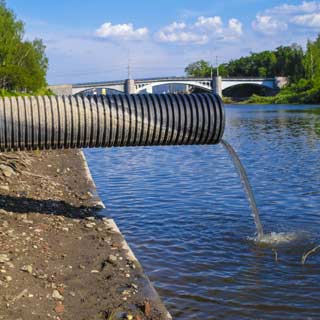As more and more people become infected with water-borne illnesses, they are seeking ways to hold those responsible accountable. Unfortunately, many of these victims are not able to file a lawsuit because they do not have enough evidence to prove their case. In this article, we will discuss when plaintiffs can establish liability in a water contamination lawsuit.
When is someone legally able to file a water contamination lawsuit?
When is someone legally able to file a water contamination lawsuit? Depending on the type of contaminant and the applicable state law, individuals may have different rights and remedies when it comes to filing a water contamination lawsuit. The following are some examples:
- Drinking water contaminated with lead: Under the Safe Drinking Water Act (SDWA), individuals who have been exposed to lead levels that exceed 15 parts per billion (ppb) in their drinking water can file a water contamination lawsuit seeking relief such as compensation for medical bills. Some states also have their lead contamination laws that may provide additional rights and remedies.
- Groundwater contamination: Under the Clean Water Act (CWA), individuals who can prove that their groundwater has been contaminated by an individual or entity regulated under the CWA may be eligible for financial compensation. This includes chemicals, nutrients, and other pollutants. To qualify, the groundwater must be connected to a source of drinking water that’s been shown to be contaminated.
- Toxic wastewater discharge: Individuals who feel their health has been affected by toxic wastewater discharge from an industrial facility may be able to sue for damages. To successfully bring a lawsuit, plaintiffs must show that the discharge caused actual harm and was not negligent on behalf of the industrial facility operator.
- Water contamination caused by a natural disaster: Individuals who are affected by a natural disaster such as a tornado, hurricane, or earthquake may be able to sue for damages if the water contamination has impacted their health. To qualify for damages, plaintiffs must show that the water contamination was the direct cause of the natural disaster.
What are the elements of a water contamination lawsuit?
When considering a lawsuit claiming water contamination, the elements to be considered include:
-The type of water contamination
-The date of the alleged incident
-How widespread was the contamination?
-Whether any injuries or illnesses resulting from the contamination
-Who is responsible for the pollution?
-What remedies are available to the victim?
Filing a lawsuit can be an effective way to hold those responsible for water contamination accountable and obtain damages. Consider each of these factors when deciding when to file a water contamination lawsuit.
How do you prove that someone has been harmed by water contamination?
When you think about water contamination, the first thing that probably comes to mind is lead poisoning. But what about other types of contaminants?
There’s no one answer to this question, as it depends on the type of water contamination and the specific facts of your case. But in general, you can use four main methods to prove that someone has been harmed by water contamination:
- Legal testimony from impacted individuals. This is often the most effective way to show that someone has been harmed by water contamination. Experts in environmental law may be able to testify as to how dangerous a particular level of chemical or toxin was in the water, and how it affected the victim’s health.
- Scientific data. This can include reports from government agencies or scientific journals detailing pollutants found in a given area’s groundwater or surface water. Analysis of this data can help prove that a certain level of pollution is harmful and detrimental to human health.
- Environmental surveys. These are analyses of an area’s physical environment – such as levels of lead or pesticides – to determine if they’re above permissible limits set by federal or state governments. Surveys like these can help support a claim that a specific area has been contaminated with harmful chemicals and should be cleaned up accordingly.
- Historical evidence. This includes anything that shows how water contamination has negatively impacted an area over time – like job losses due to decreased economic activity, lowered property values, or higher rates of illness among the population.
What are the costs of filing a water contamination lawsuit?
The costs of filing a water contamination lawsuit can vary depending on the facts and circumstances of each case. However, in general, the costs of filing court action may include attorney fees, court expenses, investigative costs, and other litigation-related expenses. Additionally, plaintiffs may be able to seek damages for economic losses (such as lost wages), environmental damage (such as cleanup costs), and personal injury damages.




















